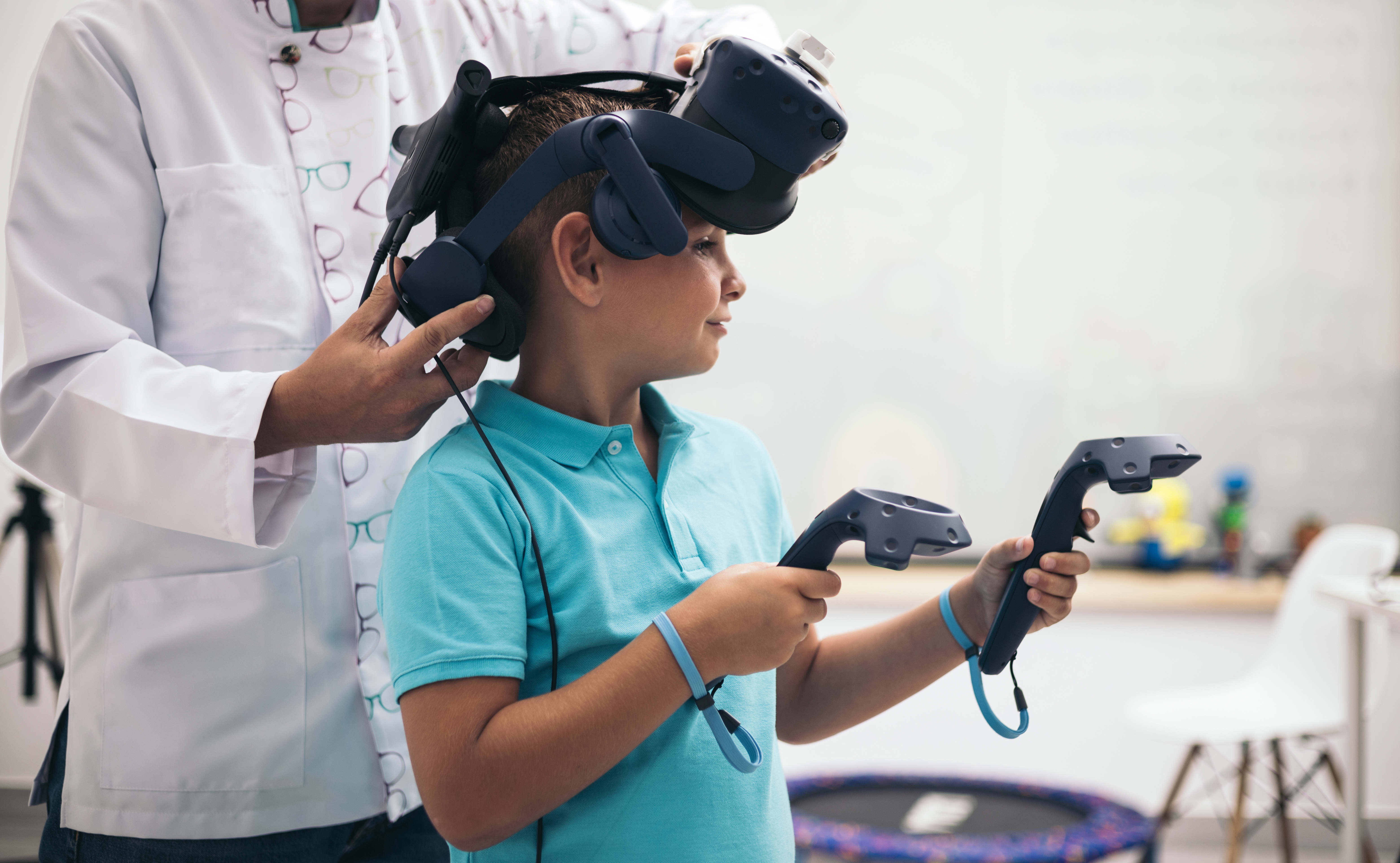Augmented Reality (AR) and Virtual Reality (VR): An Overview
Augmented Reality (AR) is a technology that superimposes digital content, such as images, videos, or 3D models, onto the real-world environment. AR enriches the user's perception of the real world by providing additional information or enhancing existing elements. This technology is usually experienced through devices like smartphones, tablets, or AR glasses, which overlay digital content onto the user's view of the physical world.
Virtual Reality (VR), on the other hand, is a technology that creates a completely immersive, computer-generated environment. Users wear VR headsets to be fully immersed in a simulated world, where they can interact with and explore the virtual surroundings.
Applications of AR and VR in Medicine, with a Focus on Ophthalmology
Both AR and VR have tremendous potential to transform various aspects of medicine, and they can play a significant role in enhancing the field of ophthalmology:
1. Medical Training and Education: AR and VR offer realistic simulations and immersive experiences, enabling medical students, residents, and ophthalmologists to practice surgical procedures, diagnosis, and treatment in a risk-free virtual environment. These technologies can help refine surgical skills, enhance spatial understanding, and increase overall proficiency. In addition, ophthalmological diseases can be simulated and thus the understanding of the problems suffered by patients with glaucoma or age-related macular degeneration, for example, can be increased.
2. Patient Education: AR can be utilized to show patients visual representations of their eye conditions, making it easier for them to comprehend complex medical information. Interactive VR presentations can also be used to explain eye diseases and potential treatment options in a more engaging and intuitive manner.
3. Surgical Planning and Navigation: AR can assist ophthalmic surgeons by overlaying critical patient information, such as preoperative imaging and vital signs, directly onto their field of view during surgery. This information can enhance precision and reduce the risk of errors during delicate eye procedures.
4. Low Vision Rehabilitation: VR can be employed to create tailored simulations for patients with visual impairments, offering rehabilitation exercises that can improve visual acuity, field of view, and overall visual function. Additionally, AR applications can provide real-time assistance to visually impaired individuals by offering navigational cues and information about their surroundings.
5. Telemedicine and Remote Consultations: AR and VR technologies can enable remote ophthalmic consultations and examinations, allowing eye specialists to virtually examine patients in remote or underserved areas. This can significantly improve access to specialized care and early detection of eye conditions. Does it beg the question, will we soon all be visiting our ophthalmologists in the Metaverse?
6. Medical Research and Visualization: AR and VR can aid in visualizing complex medical data, such as anatomical structures, molecular interactions, and disease progression. These technologies can facilitate a deeper understanding of eye diseases and potentially lead to innovative treatments.
7. Enhanced Diagnostics, Rehabilitation and Therapeutic Interventions: Extensive examinations can now be performed using VR and AR headsets. These include visual field examinations, vision tests, direct and indirect pupillary response, color vision tests, motility and, based on these, extensive neuroophthalmological examinations. Moreover, VR-based gamified exercises could be employed in the treatment of certain eye conditions, providing patients with interactive and motivating vision therapy experiences.
Conclusion:
Augmented Reality and Virtual Reality have the potential to revolutionize medicine and, more specifically, ophthalmology. From enhancing medical training and surgical planning to improving patient education and rehabilitation, these immersive technologies can contribute to better patient outcomes, increased accessibility to specialized care, and advancements in ophthalmic research and treatment. As technology continues to evolve, we can expect even more exciting and innovative applications in the field of eye care.
There are now a number of startups and companies specializing in AR and VR applications in the field of ophthalmology. In our upcoming article series, we will visit Haag Streit Simulation (Mannheim, Germany), formerly the start-up VRMagic, as well as the start-up TwentyTwenty, which is the result of a cooperation between Verily (San Francisco, CA, USA) and Santen (Osaka, Japan). Other companies that also produce VR-based headsets include Virtual Field (New York, NY, USA), Micro Medial Devices (Calabasas, CA, USA), and M & S Technologies (Niles, IL, USA). Additionally, the new product launch of Apple's new Vision Pro VR glasses shows that there continues to be a large market for VR and AR applications, not just in the medical field.
Further Links:




